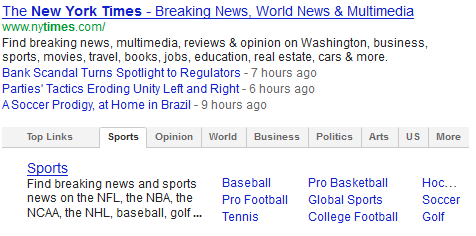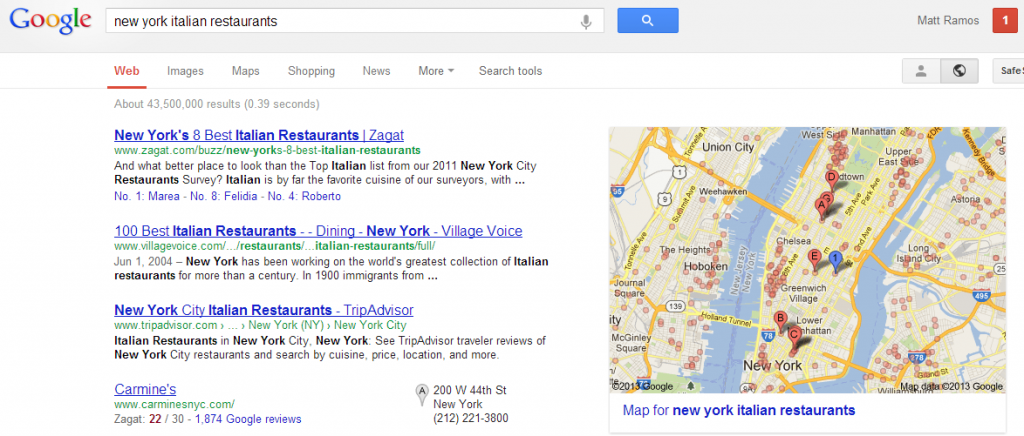In a previous blog post we outlined the basics of Google’s new tabbed sitelinks (below). Many people have been wondering what affects this will have on SEO practices and online business in general. For now, the feature has only spread to select people in test mode that started in July. It’s expected to roll out to everyone starting with brands first then spread out beyond that.

10 Ways Tabbed Sitelinks Could Effect Online Businesses
This Google update will impact brand searches in terms of Click Through Rate (CTR), visits, pageviews, dwell time, conversions, and eventually sales. It’s very early to tell just how much of an impact it will have, but here are a few thoughts on what the new layout will provide:
– Better user experience – Users will find the appropriate pages more quickly directly from sitelinks.
– Deep pages become more visible – Deep pages that usually take 2-4 more clicks to get to will be available readily to users. They will become additional entry points, which will make sitelink optimization even more necessary.
– Brand search will have higher visibility – The tabbed format will give users multiple navigation options, making it less likely to click on an alternative search result.
– CTR’s may increase further – The new tabbed layout may increase traffic overall and it may even reverse the traffic flows from home page to deep pages. Potentially, organic brand traffic will increase.
– Conversion increase from brand traffic – There will be an increase in the number of sitelinks and the corresponding landing pages that will be matching user intent more closely.
– Quick snapshot of the site’s core services/products – Tabs and sitelinks will provide users with a quick outline of the site’s content and structure. This could make additional services and products more valuable when compared to the popular ones.
 – Pageviews may decrease – For sites with a high percentage of branded traffic, those visitors would land on their homepage first. Now users can go directly to the page they need, and this may hurt websites that use pageviews as a Key Performance Indicator (KPI).
– Pageviews may decrease – For sites with a high percentage of branded traffic, those visitors would land on their homepage first. Now users can go directly to the page they need, and this may hurt websites that use pageviews as a Key Performance Indicator (KPI).
– Bounce rate from sitelinks may increase – Depending on the type of site you are using (informational, eCommerce, news, etc.) Most users will land on the page they desire.
– Average time on site will drop – The users will find the information they seek faster so their time spent on the site will drop. When a user visits a page and bounces off, the time on the page will be reported as 00:00. You will need to rely on dwell time rather than bounce rate. Average time on page would be more beneficial.
– Usability and conversion optimization will be more important – Brands will need to reevaluate how users navigate their site from the back end to the home page, since users can start anywhere within the site now from the tabbed sitelinks.
In summary, the new tabbed sitelinks layout will be beneficial for websites as long as popular and useful sections appear in the tabs. If your website isn’t optimized correctly, then it could just confuse the users, especially if your deep pages don’t enhance the user experience. However, the landing pages will contribute greatly to conversion and revenue as they give users exactly what they are looking for.
Increase your Online Marketing exposure in 2012 with the above tips and contact us if you need assistance.
Image courtesy of vichie81 & digitalart / FreeDigitalPhotos.net


